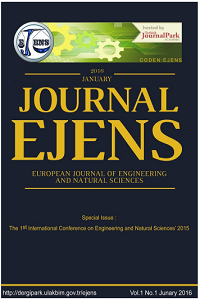Isotherm and Kinetic Modelling of Azo Dyes Adsorption
Isotherm and Kinetic Modelling of Azo Dyes Adsorption
___
- .W. Lee, S.P. Choi, R. Thiruvenkatachari, W.G. Shim, H. Moon, “Evaluation of the performance of adsorption and coagulation processes for the maximum removal of reactive dyes,” Dyes Pigments, 69 (2006) 196–203.
- [2]. A.B. dos Santos, F.J. Cervantes, J.B. van Lier, “Review Paper on Current Technologies for Decolourisation of Textile Wastewaters: Perspectives for Anaerobic Biotechnology,” Bioresource Technology, 98 (2007) 2369-2385.
- [3]. A.A. Attia, B.S. Girgis, N.A. Fathy, “Removal Of Methylene Blue Bycarbons Derived From Peach Stones By H3PO4 Activation: Batch And Columnstudies,” Dyes And Pigments, (2008) 282-289.
- [4]. M.A.M. Salleh, D.K. Mahmoud, W.A. Karim, A. Idris, “Cationic and anionic dye adsorption by agricultural solid wastes: A Comprehensive review,” Desalination, 280 (2011) 1-13.
- [5]. A. Stolz, “Basic and applied aspects in the microbial degradation of azo dyes,” Appl. Microbiol. Biotechnol. 56 (2001) 69–80.
- Başlangıç: 2015
- Yayıncı: CNR Çevre
Comparison of Performance of Conventional Membrane Bioreactor with Dynamic Membrane Bioreactor
Isotherm and Kinetic Modelling of Azo Dyes Adsorption
Chemically Color Removal from Textile Wastewater with Oxidizing and Reducing Agents
Mustafa KARABOYACI, Mesut UYSAL, Aziz ŞENCAN, Mehmet KILIÇ
Effect of High Dosage Air-Entraining Admixture Usage on Micro Concrete Properties
Evaluation of Commercial Type of Split Air Conditions by Using Condenser Waste Heat in a Boiler
